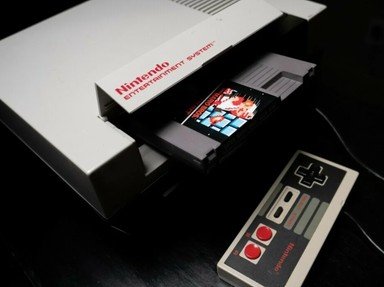Quiz Answer Key and Fun Facts
1. In the '80s, The Nintendo Entertainment System (NES) revolutionised the US video game industry. How?
2. The origin of the Nintendo Entertainment System can be traced back to Nintendo in Japan who released a video games platform based on the family home computer. What was the name of this NES precursor which was based on a home computer?
3. The Nintendo Entertainment System's success in the US market was due to some very shrewd marketing. However the hardware on the US version was also reconfigured. What was the main difference between the Japanese version of the console and the NES?
4. The Nintendo Entertainment System was released with an 8-bit microprocessor and has 2 kB of onboard work RAM. How were games run on the NES with such low specification hardware?
5. Arguably the Nintendo Entertainment System's controller was the prototype for the all the manufacturers' controllers that followed. The NES controller featured a Joypad. What did this control function as?
6. The Nintendo Entertainment system was where the character Mario made his first appearance.
7. Over 700 games were released for the Nintendo Entertainment System. Which one of the following was *NOT* a game available on the NES?
8. The Nintendo Entertainment System was so successful, video stores that rented out videos for the burgeoning video rental market began renting NES games. Nintendo sued Blockbuster to try to stop them renting games. Did they stop the practice?
9. Before the Nintendo Entertainment System some video games manufacturers lost income when other manufacturers made games that could be played on other consoles. Nintendo did the reverse and actually encouraged third party licensing. How did they achieve this?
10. Nintendo started life as a playing card manufacturer but had success with arcade games manufactured in the '70s and '80s. However the company aspired to be able to catch Atari, the industry benchmark. Did the Nintendo Entertainment Centre outsell its Atari and Sega counterparts' consoles?
Source: Author
1nn1
This quiz was reviewed by FunTrivia editor
kyleisalive before going online.
Any errors found in FunTrivia content are routinely corrected through our feedback system.
